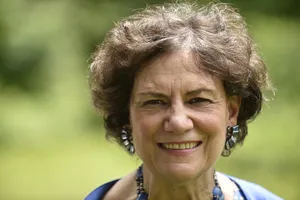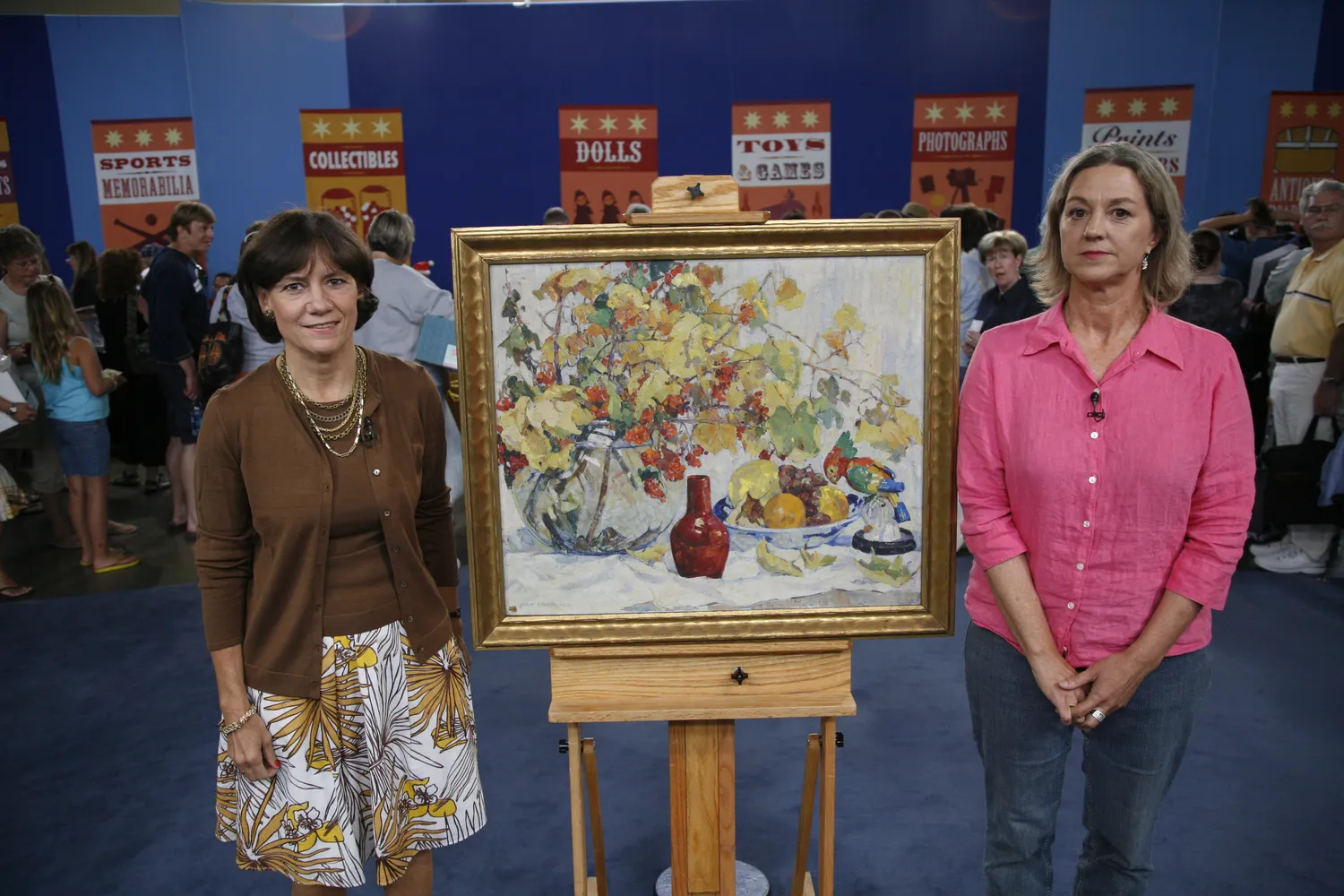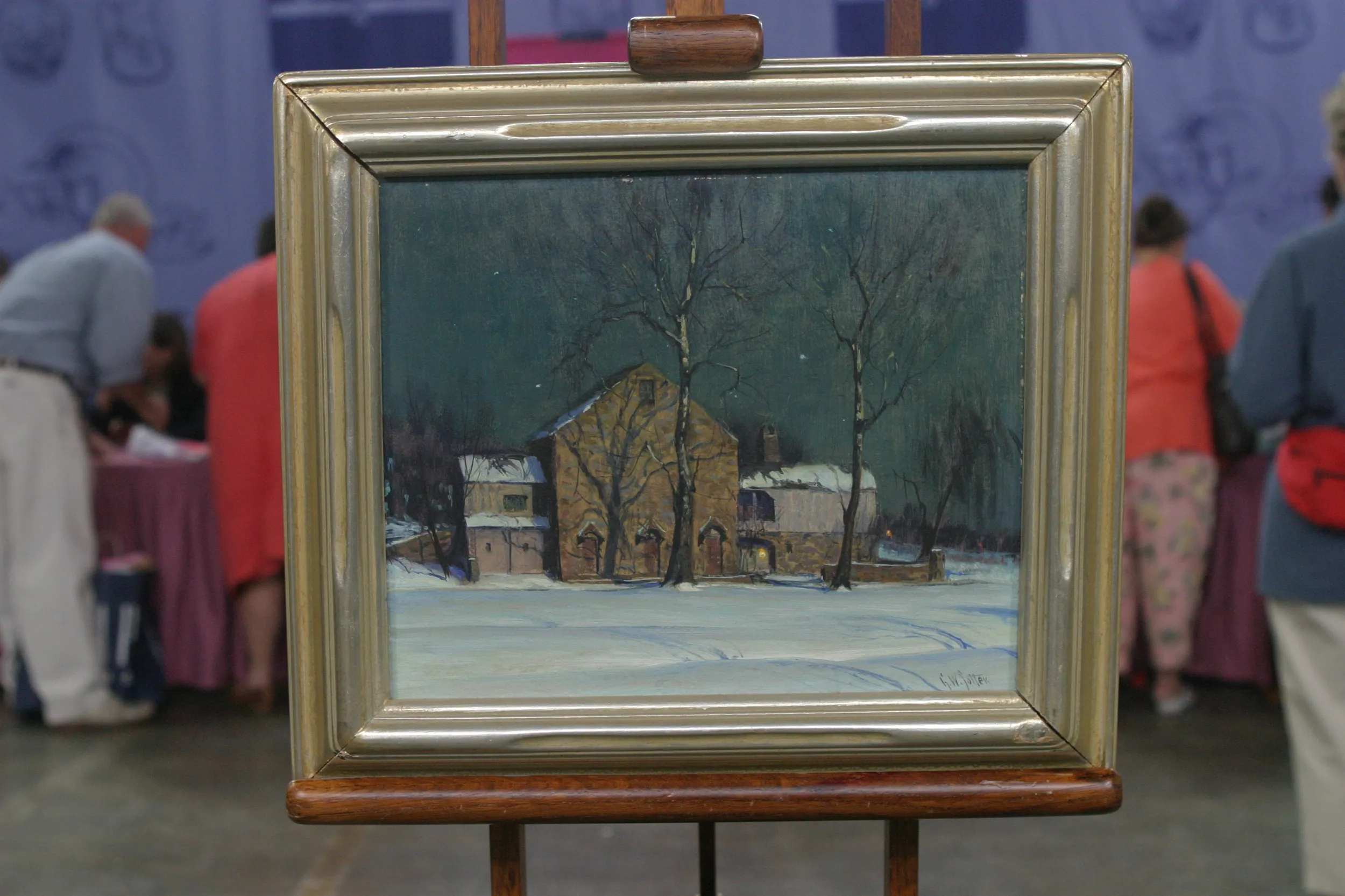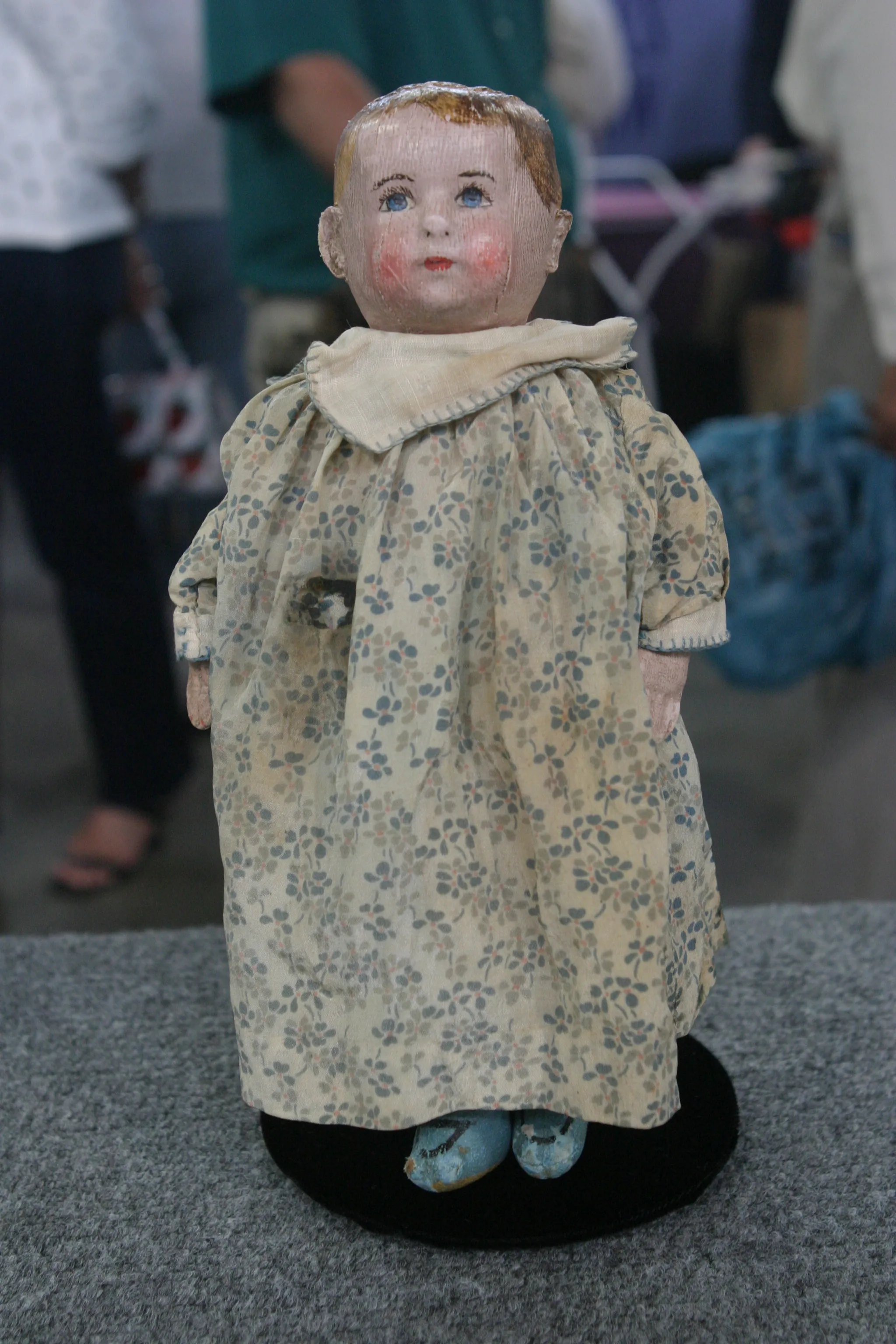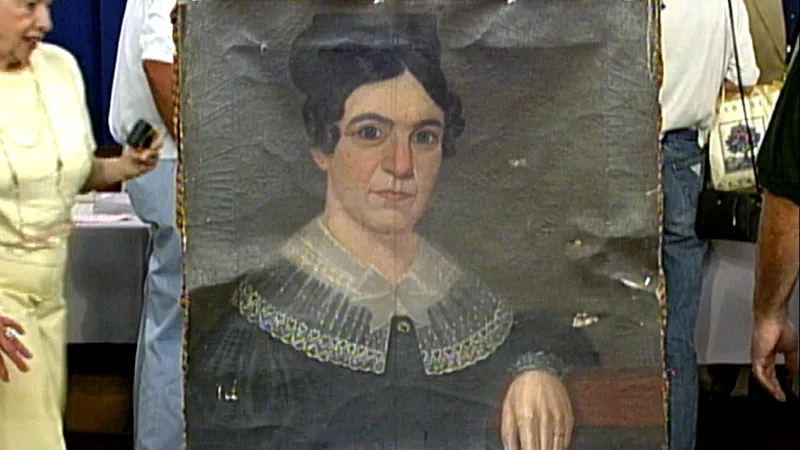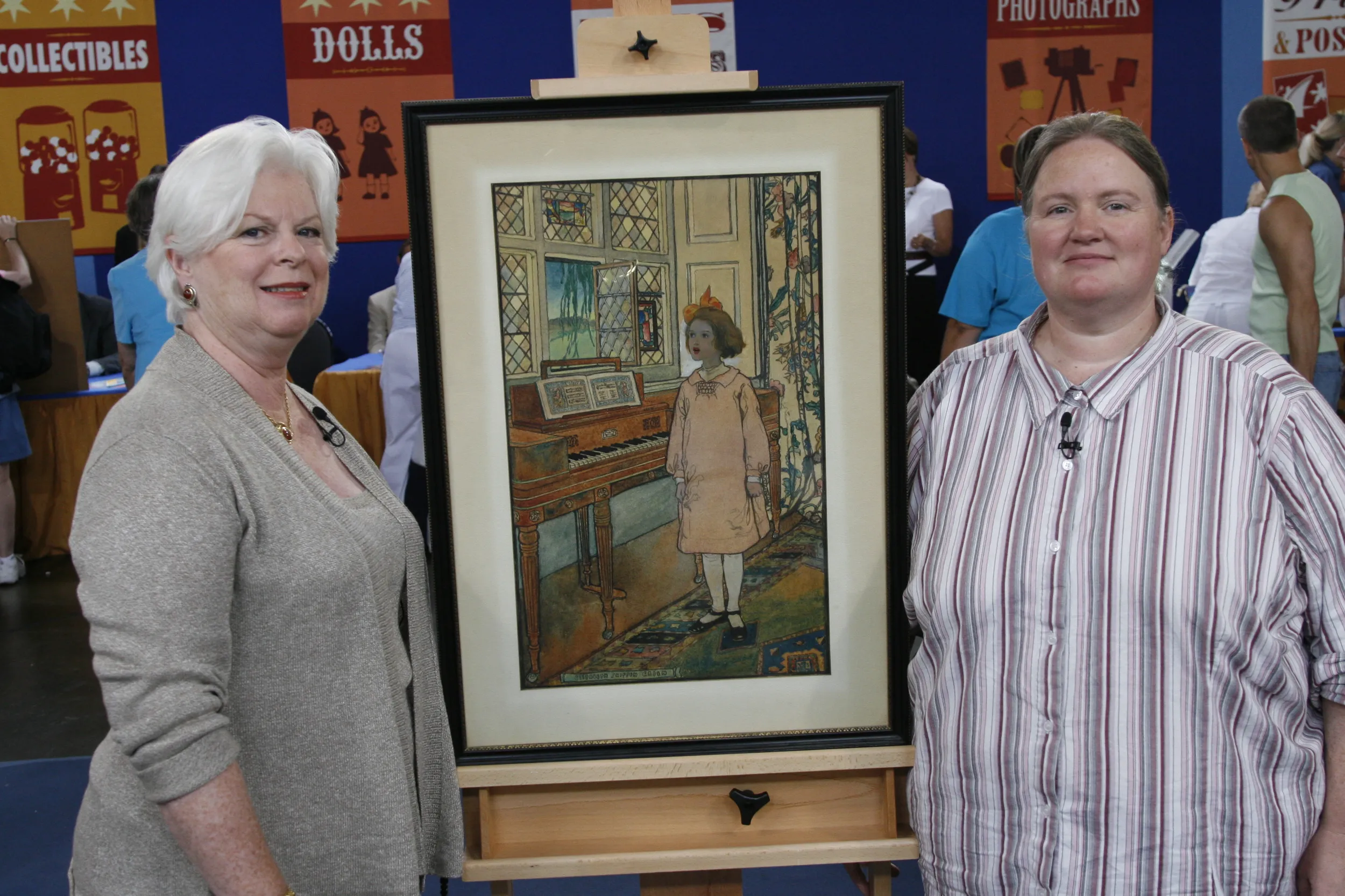GUEST: It was from grandparents. My grandparents were all from the Chicago area. And for years, we had this painting hanging up in our house, and it kind of knocked around-- I have to say-- the house. And I always loved it. I loved the colors, and I loved the bittersweet here and the parrot. And some years ago, when I moved west to Spokane, my mother put some furniture, family furniture, on a moving van, and she said, "Is there anything else you want or anything else I can...?" And I said, "You know, are there any paintings or anything? My walls are really bare." And she said, "How about that painting with the parrot?" She said, "Oh, I'll throw it on." So she literally, I think, threw it on the van, and...
APPRAISER: Mm-hmm.
GUEST: 'Cause when the doors opened in Spokane, it was, like, just shoved in there. And I put it on my wall here. I've had it on my wall here for probably ten years. And, so then, a couple of weeks ago, actually, it fell off the wall.
APPRAISER: And that's why we have this small puncture here?
GUEST: Yeah. I wanted to bring it here to see if it was worth repairing, that's why I brought it.
APPRAISER: Well, certainly, it's a fairly clean break, so it should be relatively easy to repair. You've brought in a painting by Nellie Knopf, and interestingly enough, she's actually from Chicago. She studied at the Art Institute of Chicago, and in the summers, up to the early '20s, she went to Ogunquit, Maine, and studied with an artist there named Charles Woodbury. And then, she actually went out West and began painting mountains and pueblos; and for a woman at that period, that was very rare. She was almost like a pioneer, because, keep in mind that Georgia O'Keeffe didn't go out West until about 1929, so quite a bit later. She also was challenged in a couple of other ways. She was deaf, for one; and, secondly, as a single woman, a single woman artist, she had a very hard road to travel. Because women artists, at this time, were not supported very well-- even the ones that were married. Often, they were overshadowed by their husbands if they were married to artists. If they had husbands that weren't artists, perhaps they had extra support.
GUEST: Interesting.
APPRAISER: But she, she really had to go out on her own and do that. And in terms of the rest of the condition, it's actually in very fine condition. It's a little bit dirty and probably could be cleaned.
GUEST: Yeah, it's dirty. Yeah, it looks dirty.
APPRAISER: And the only other thing I might point out is this small little label here, this number 32. Maybe the painting was shown in an artists' invitational, and they would number them.
GUEST: Oh.
APPRAISER: And for some reason, in the 1920s-- this was done in 1925-- they would put them on the front of the canvas. And the other thing is the wonderful brushwork here. It's, it's very bold, broad, and gutsy. Now, in terms of value, the market for women artists has been constantly on the upswing for the last few years, so that there is a great deal of interest in finding undiscovered women artists, and Nellie Knopf would fit into that group.
GUEST: Hm.
APPRAISER: If this painting were in a gallery in New York, or in Chicago, I think that the selling price would be somewhere in the range of $15,000.
GUEST: Hmm. Well, thank you very much.
APPRAISER: Oh. Well, thank you. Thank you.
